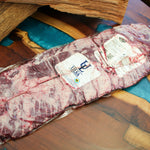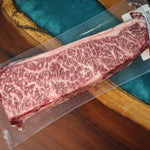
Chapter 10: Sustainable Beef and Culinary Fusion: A Modern Blend
A Shifting Paradigm: Beef in the 21st Century
As we move through the 21st century, the way we think about beef continues to evolve. No longer just a staple of steakhouses or fast food chains, beef is now part of a larger conversation about sustainability, ethical sourcing, and culinary creativity. Consumers are increasingly conscious of where their food comes from, how it’s produced, and the impact it has on the planet.
Sustainability: A Growing Focus in Beef Production
In the early 2000s, awareness about the environmental and ethical impact of food production led to increased scrutiny of beef. While beef has often been criticized for its resource-intensive production, the industry has responded by improving sustainable practices, animal welfare, and regenerative farming techniques.
A major milestone in this movement was the formation of the Global Roundtable for Sustainable Beef (GRSB) in 2005, bringing together industry leaders, environmental groups, and farmers to develop best practices. By the 2010s, consumer demand for grass-fed, pasture-raised, and regeneratively farmed beef was on the rise. This shift reflects a growing interest in more natural, ethical, and environmentally friendly beef production.
Culinary Fusion: The Evolution of Global Beef Dishes
As the world becomes more interconnected, culinary fusion has expanded beyond simple flavor combinations into deeply integrated cultural exchanges. Beef, with its versatility and rich history, remains a centerpiece for many innovative chefs.
- In the early 2010s, the Korean-Mexican fusion movement gained mainstream popularity with Bulgogi Tacos, which blended Korean marinated beef with the taco al pastor concept.
- Around 2015, restaurants experimenting with pho-inspired beef burritos (sometimes called Phorritos) showcased the increasing trend of Asian-Latin fusion.
- In the late 2010s and 2020s, dishes like Japanese beef katsu sandwiches, Wagyu-infused burgers, and Mediterranean beef flatbreads became more common in high-end and casual dining.
While some of these trends remain regional or niche, they highlight how chefs worldwide continue to innovate with beef in creative ways.
A Shift Toward More Conscious Beef Consumption
In the late 2010s and early 2020s, beef consumption patterns started to shift. While premium cuts like Wagyu and dry-aged beef gained popularity among food enthusiasts, leaner and ethically sourced cuts also became more desirable for health-conscious consumers.
- Wagyu Beef Demand Surge (2010s – 2020s): Wagyu’s rich marbling and tender texture made it a symbol of luxury dining, with demand rising in high-end restaurants and specialty retailers.
- Heritage Breed Awareness: While heritage breeds like Angus, Hereford, and Red Devon have always been valued for their unique flavor, recent years have seen a growing niche market for traditionally bred, pasture-raised beef.
- Nose-to-Tail Dining & Sustainable Butchery: More chefs and restaurants are focusing on using the whole animal—not just prime cuts—reducing waste and honoring traditional butchery practices.
Crafting Culinary Narratives: The Future of Beef
The future of beef is not just about consumption—it’s about storytelling. As consumers become more aware of their choices, chefs, farmers, and butchers play a crucial role in educating people about beef’s origins, sustainability, and the craft behind quality meat.
- Beef tasting menus—while still a niche offering—are gaining traction in fine dining establishments, allowing diners to explore different cuts, aging processes, and preparation methods.
- Regenerative beef farming is becoming a major topic, with ranchers emphasizing soil health, carbon sequestration, and ethical animal husbandry.
- Modern butchery and craft beef shops are revitalizing interest in artisanal, locally sourced meat, moving away from industrial-scale production.
A Balanced Future: Tradition Meets Innovation
As we navigate the evolving world of culinary trends, sustainability, and ethical consumption, beef continues to play a dynamic role. From its humble beginnings in ancient pastures to the fusion-heavy kitchens of today, beef remains a symbol of craftsmanship, cultural heritage, and evolving tastes.
The story of beef is far from over—it is constantly adapting to the values, preferences, and innovations of each new generation.














